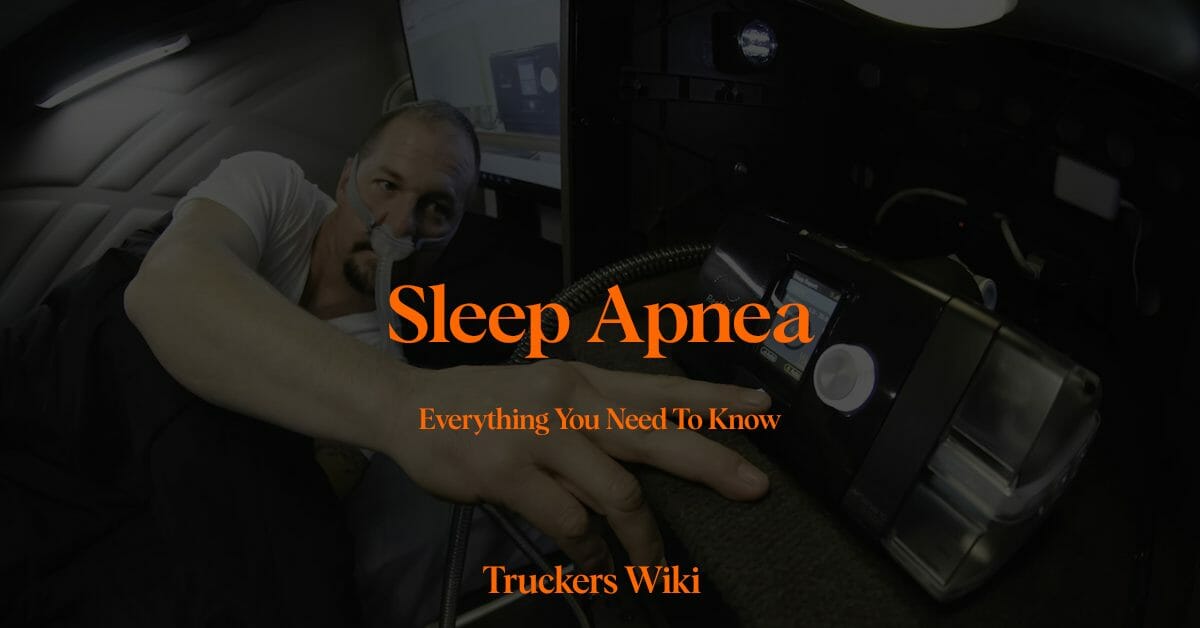
Table of Contents
What is Sleep Apnea
Sleep apnea is a sleep disorder characterized by interrupted breathing during sleep. It occurs when the upper airway becomes partially or completely blocked, leading to pauses in breathing that can last from a few seconds to over a minute. These pauses, known as apneas, can occur multiple times throughout the night, disrupting the sleep cycle.
Types of Sleep Apnea
Obstructive Sleep Apnea (OSA)
This is the most common form of sleep apnea. It occurs when the muscles at the back of the throat fail to keep the airway open, often due to relaxation of the soft tissue.
Central Sleep Apnea (CSA)
This less common form of sleep apnea is caused by a failure of the brain to transmit the proper signals to the muscles that control breathing.
Complex or Mixed Sleep Apnea
This is a combination of both obstructive and central sleep apnea.
The Impact on Truck Drivers
For truck drivers, untreated sleep apnea can have serious consequences:
Daytime Sleepiness
Sleep apnea often leads to excessive daytime sleepiness, which can impair a driver’s alertness and reaction time.
Decreased Cognitive Function
Poor sleep quality can affect memory, concentration, and decision-making abilities.
Increased Accident Risk
Sleep-deprived drivers are more likely to be involved in accidents due to impaired driving skills.
Health Risks
Untreated sleep apnea is associated with an increased risk of various health issues, including high blood pressure, heart disease, and diabetes.
Recognizing the Signs and Symptoms
It’s important for truck drivers to be aware of common signs of sleep apnea, including:
- Loud snoring
- Pauses in breathing during sleep
- Excessive daytime sleepiness
- Morning headaches
- Irritability and mood changes
- Difficulty staying asleep
Diagnosis and Treatment
If you suspect you have sleep apnea, it’s crucial to seek professional evaluation. This typically involves:
Sleep Study (Polysomnography)
A sleep study is conducted in a specialized sleep center or at home using portable equipment. It monitors various aspects of sleep, including brain activity, eye movements, heart rate, and airflow.
Treatment Options:
Continuous Positive Airway Pressure (CPAP)
This is the most common and effective treatment for obstructive sleep apnea. It involves wearing a mask over the nose and/or mouth during sleep, which delivers a continuous flow of air to keep the airway open.
Learn more about CPAP machine here.
Bi-Level Positive Airway Pressure (BiPAP)
Similar to CPAP, but it provides varying pressure levels for inhalation and exhalation.
Oral Appliances
These are custom-made devices that help reposition the jaw and tongue to keep the airway open.
Lifestyle Changes
This may include weight loss, avoiding alcohol and sedatives, and adopting a regular sleep schedule.
Compliance and Safety Regulations
Truck drivers diagnosed with sleep apnea should be aware of compliance requirements set by the Federal Motor Carrier Safety Administration (FMCSA). These may include regular usage of prescribed treatment and periodic medical evaluations.
Learn more about Health, Food and Exercise for truck drivers here.
External Links
Sleep Apnea Effect On Truck Drivers – Is It The Unseen Danger? – Article by Employal – click here.

